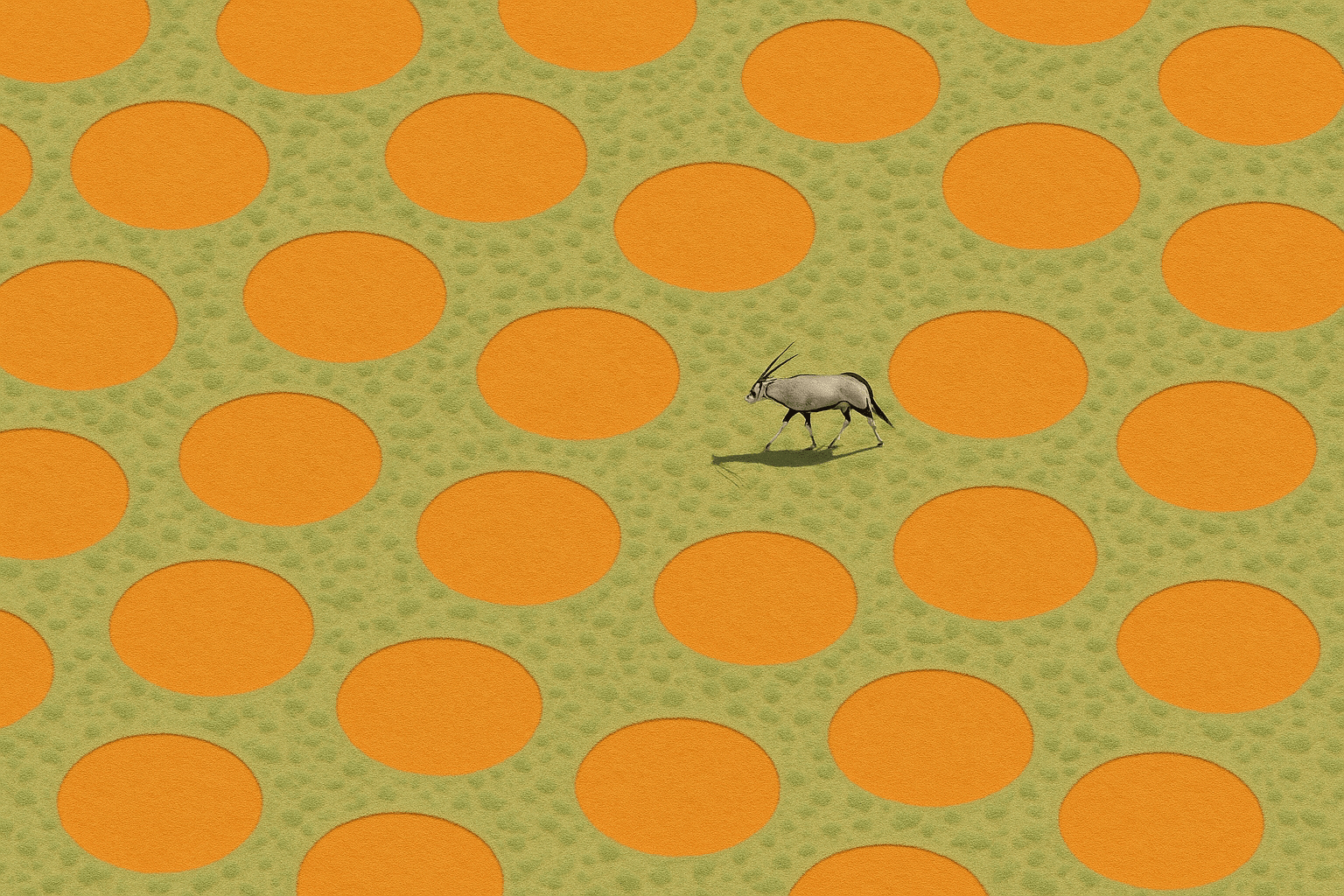What Exactly Are We Looking At?
From a geographical perspective, fairy circles are a stunning example of large-scale pattern formation in a natural landscape. These circles are remarkably consistent in their characteristics:
- Shape and Size: They are almost perfectly circular, with diameters ranging from 2 to 15 meters (about 7 to 49 feet).
- Composition: The inside of a circle is devoid of vegetation, consisting of bare, sandy soil. This barren patch is often surrounded by a distinct ring of tall, lush perennial grasses.
- Distribution: Most famously, they occur in a narrow north-south band on the eastern edge of the Namib Desert in Namibia. However, the plot thickened in 2014 when similar formations were discovered thousands of miles away in the remote Pilbara region of Australia, sparking new questions.
- Pattern: They are not randomly scattered. The circles maintain a notable, even spacing from one another, creating a visually striking, ordered landscape that seems almost intelligently designed.
This regular, repeating pattern is what elevates the fairy circles from a simple curiosity to a profound scientific puzzle. What force of nature has the power to create such large-scale geometric precision?
Myths and Legends: The Dragon’s Breath
Before science attempted to provide an answer, local folklore offered its own magical explanations. The oral traditions of the Himba people, who have lived in this region for centuries, tell a more poetic story. To them, the circles are the work of supernatural forces.
One legend describes them as the footprints of their god, Mukuru. Another captivating tale claims they were created by an underground dragon whose poisonous, fiery breath bubbled up to the surface, scorching the vegetation in perfect circles. Still others believe they are the temporary dance floors for spirits or fairies who, after celebrating under the moonlight, leave behind a barren circle where their feet touched the earth. While scientifically implausible, these stories add a rich layer of human geography to the phenomenon, highlighting our innate desire to find meaning in the patterns of the world around us.
The Scientific Showdown: Termites vs. Thirst
For decades, scientists have been locked in a compelling debate, with two dominant theories vying to explain the origin of the fairy circles. This intellectual duel pits tiny subterranean insects against the fundamental physics of water in an arid land.
Theory 1: The Subterranean Architects (The Sand Termite Theory)
Championed by German biologist Norbert Jürgens, this theory points to a specific culprit: the sand termite, Psammotermes allocerus. According to this hypothesis, the termites are “ecosystem engineers” who actively create and maintain the circles for their own survival.
The process works like this: a colony of termites establishes itself and begins to consume the roots of the annual grasses in a circular area. This kills the plants, creating the barren patch. This patch, now free of vegetation that would otherwise transpire water back into the atmosphere, becomes a highly effective water trap. When the sparse rains come, water percolates deep into the sandy soil of the circle, creating a stable, long-lasting underground reservoir.
This stored moisture benefits the termites, who need it to survive the harsh dry seasons. It also benefits the perennial grasses on the circle’s edge, whose roots can tap into this reservoir, allowing them to grow taller and greener than their neighbours. This explains the characteristic lush ring. The even spacing between circles is explained by competition; different termite colonies maintain distinct territories, preventing their circles from overlapping, much like rival ant colonies.
Theory 2: The Thirsty Plants (The Self-Organization Theory)
The other major camp, supported by mathematicians and ecologists, argues that no living creature is needed to create the circles. Instead, the pattern is an emergent property of the plants themselves as they compete for the scarcest resource of all: water. This is known as the plant self-organization theory.
In the extremely arid environment of the Namib, plants are locked in a fierce battle for survival. The theory posits that clumps of grass become established and, through their root systems, draw in water from their immediate surroundings. The stronger plants essentially outcompete their neighbours, creating a “zone of inhibition” around them where other plants cannot grow. This barren zone is the fairy circle.
These bare patches are not wastelands; they are crucial water collectors. Rainwater that falls on the impermeable soil of the circle runs off to the edges, providing a concentrated water supply to the ring of grasses, allowing them to thrive. The regular, honeycomb pattern is a mathematically predictable outcome of this intense, scale-dependent competition—a phenomenon first described by the brilliant mathematician Alan Turing and now known as a “Turing pattern.” Computer models simulating these water-competition dynamics have successfully replicated the fairy circle landscapes with astonishing accuracy.
A Unified Explanation?
For years, the debate was strictly either/or. But what if both theories are part of the story? Recent research has moved towards a hybrid model that suggests the two processes may work together.
It’s possible that plant self-organization and water competition create the initial pattern of barren patches. Then, sand termites, recognizing these areas as ideal habitats with trapped moisture, move in to colonize and maintain them. In this scenario, the plants create the canvas, and the termites act as artists who refine and preserve the masterpiece. This unified theory acknowledges the strengths of both arguments—the mathematical elegance of self-organization and the compelling on-the-ground evidence of termite activity.
Whether the work of gods, termites, or physics, Namibia’s fairy circles remain a powerful reminder of the intricate and often mysterious processes that shape our planet’s surface. They are a perfect intersection of physical geography, biology, and even mathematics, etched into the desert floor. The ongoing quest to understand them proves that even in the most desolate landscapes, there are complex stories waiting to be told.
